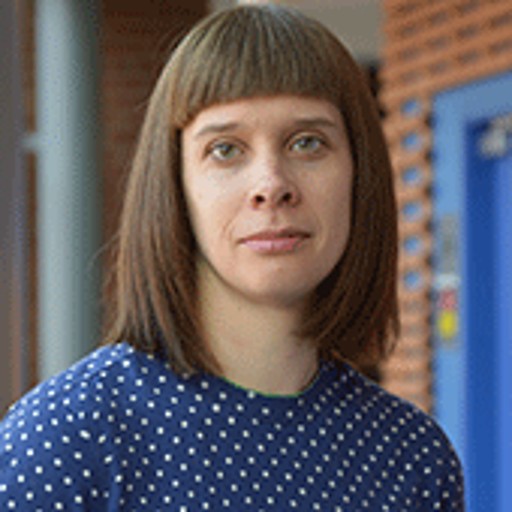The course syllabus contains changes
See changesCourse syllabus adopted 2021-02-17 by Head of Programme (or corresponding).
Overview
- Swedish nameIntroduktion till data science och AI
- CodeDAT405
- Credits7.5 Credits
- OwnerMPDSC
- Education cycleFirst-cycle
- Main field of studySoftware Engineering, Mathematics
- DepartmentCOMPUTER SCIENCE AND ENGINEERING
- GradingTH - Pass with distinction (5), Pass with credit (4), Pass (3), Fail
Course round 1
- Teaching language English
- Application code 87117
- Open for exchange studentsYes
Credit distribution
Module | Sp1 | Sp2 | Sp3 | Sp4 | Summer | Not Sp | Examination dates |
|---|---|---|---|---|---|---|---|
| 0119 Written and oral assignments 7.5 c Grading: TH | 7.5 c |
In programmes
Examiner
 Marina Axelson-Fisk
Marina Axelson-Fisk- Professor, Applied Mathematics and Statistics, Mathematical Sciences
Course round 2
- Teaching language English
- Application code 87116
- Block schedule
- Open for exchange studentsYes
Credit distribution
Module | Sp1 | Sp2 | Sp3 | Sp4 | Summer | Not Sp | Examination dates |
|---|---|---|---|---|---|---|---|
| 0119 Written and oral assignments 7.5 c Grading: TH | 7.5 c |
In programmes
- MPALG - COMPUTER SCIENCE - ALGORITHMS, LANGUAGES AND LOGIC, MSC PROGR, Year 1 (elective)
- MPALG - COMPUTER SCIENCE - ALGORITHMS, LANGUAGES AND LOGIC, MSC PROGR, Year 2 (elective)
- MPCSN - COMPUTER SYSTEMS AND NETWORKS, MSC PROGR, Year 1 (elective)
- MPCSN - COMPUTER SYSTEMS AND NETWORKS, MSC PROGR, Year 2 (elective)
- MPEPO - SUSTAINABLE ELECTRIC POWER ENGINEERING AND ELECTROMOBILITY, MSC PROGR, Year 2 (elective)
- TIDAL - COMPUTER ENGINEERING - AI - Machine learning , Year 3 (compulsory)
- TKAUT - AUTOMATION AND MECHATRONICS ENGINEERING, Year 3 (elective)
- TKELT - ELECTRICAL ENGINEERING, Year 3 (compulsory elective)
- TKITE - SOFTWARE ENGINEERING, Year 2 (elective)
- TKITE - SOFTWARE ENGINEERING, Year 3 (elective)
- TKSAM - CIVIL ENGINEERING, Year 3 (elective)
Examiner
- Claes Strannegård
Course round 3
- Teaching language English
- Application code 87114
- Block schedule
- Open for exchange studentsYes
Credit distribution
Module | Sp1 | Sp2 | Sp3 | Sp4 | Summer | Not Sp | Examination dates |
|---|---|---|---|---|---|---|---|
| 0119 Written and oral assignments 7.5 c Grading: TH | 7.5 c |
In programmes
- MPALG - COMPUTER SCIENCE - ALGORITHMS, LANGUAGES AND LOGIC, MSC PROGR, Year 1 (elective)
- MPDES - INDUSTRIAL DESIGN ENGINEERING, MSC PROGR, Year 1 (elective)
- MPEPO - SUSTAINABLE ELECTRIC POWER ENGINEERING AND ELECTROMOBILITY, MSC PROGR, Year 1 (elective)
- MPHPC - HIGH-PERFORMANCE COMPUTER SYSTEMS, MSC PROGR, Year 1 (elective)
- MPMOB - MOBILITY ENGINEERING, MSC PROGR, Year 1 (elective)
- MPSOF - SOFTWARE ENGINEERING AND TECHNOLOGY, MSC PROGR, Year 1 (compulsory elective)
- TKAUT - AUTOMATION AND MECHATRONICS ENGINEERING, Year 3 (elective)
- TKDAT - COMPUTER SCIENCE AND ENGINEERING, Year 3 (elective)
- TKELT - ELECTRICAL ENGINEERING, Year 3 (compulsory elective)
- TKITE - SOFTWARE ENGINEERING, Year 2 (elective)
- TKITE - SOFTWARE ENGINEERING, Year 3 (elective)
- TKSAM - CIVIL ENGINEERING, Year 3 (elective)
Examiner
- Claes Strannegård
Course round 4
- Teaching language English
- Application code 87123
- Open for exchange studentsYes
Credit distribution
Module | Sp1 | Sp2 | Sp3 | Sp4 | Summer | Not Sp | Examination dates |
|---|---|---|---|---|---|---|---|
| 0119 Written and oral assignments 7.5 c Grading: TH | 7.5 c |
In programmes
- MPEPO - SUSTAINABLE ELECTRIC POWER ENGINEERING AND ELECTROMOBILITY, MSC PROGR, Year 1 (elective)
- MPMOB - MOBILITY ENGINEERING, MSC PROGR, Year 1 (elective)
- TKELT - ELECTRICAL ENGINEERING, Year 3 (compulsory elective)
- TKGBS - GLOBAL SYSTEMS ENGINEERING, Year 2 (compulsory)
Examiner
 Moa Johansson
Moa Johansson- Associate Professor, Data Science and AI, Computer Science and Engineering
Eligibility
General entry requirements for bachelor's level (first cycle)Applicants enrolled in a programme at Chalmers where the course is included in the study programme are exempted from fulfilling the requirements above.
Specific entry requirements
The same as for the programme that owns the course.Applicants enrolled in a programme at Chalmers where the course is included in the study programme are exempted from fulfilling the requirements above.
Course specific prerequisites
A course in programming in a general-purpose language (e.g. C/C++/Java/Python or similar) and/or familiarity with mathematical software like e.g. MATLAB from other courses. One course in mathematics (e.g. calculus, linear algebra, applied mathematical thinking), and one course in mathematical statistics.Aim
The course gives a broad introduction to various techniques and theories used in Data Science and AI, with particular focus on their practical applications.Learning outcomes (after completion of the course the student should be able to)
On successful completion of the course the student will be able to:
Knowledge and understanding
- describe fundamental types of problems and main approaches in data science and AI
- give examples of data science and AI applications from different contexts
- give examples of how stochastic models and machine learning (ML) are applied in data science and AI
- explain basic concepts in classical AI, and the relationship between logical and data driven, ML-based approaches within AI.
- briefly explain the historical development of AI, what is possible today and discuss possible future development.
Skills and abilities
- use appropriate programming libraries and techniques to implement basic transformations, visualizations and analyses of example data
- identify appropriate types of analysis problems for some concrete data science applications
- implement some types of stochastic models and apply them in data science and AI applications
- implement and/or use AI-tools for search, planning and problem solving
- apply simple machine learning methods implemented in a standard library
Judgement and approach
- justify which type of statistical method is applicable for the most common types of experiments in data science applications
- discuss advantages and drawbacks of different types of approaches and models within data science and AI.
- reflect on inherent limitations of data science methods and how the misuse of statistical techniques can lead to dubious conclusions
- critically analyze and discuss data science and AI applications with respect to ethics, privacy and societal impact
- show a reflective attitude in all learning
Content
During the course, a wide selection of methods for Data Science and AI will be introduced. The course is divided into three parts:
Introduction to data science
- Implementation of data science solutions, using Python, basic data analysis and visualization.
- Introduction of the data science process, and appropriate methodology.
- Examples of core data science methods with case studies such as in clustering, classification and regression.
- Data science put in context regarding ethics, regulations and limitations.
Statistical methods for data science and AI
- Introduction of some common stochastic models with examples of applications in data science and AI (for instance, naive Bayes classifiers, topic models for text and Hidden Markov Models for sequence data).
Artificial Intelligence
- Introduction to classical AI and machine learning, including the relationship to related areas such as algorithms and optimization, and AI philosophy.
- Examples of methods and applications of AI, in classical AI (search and constraint satisfaction), and ML-based (search engines, naive Bayes and neural networks)
- Discussion of ethics and societal impact of AI.
Organisation
Lectures and seminars together with assignments that are done in pairs. Usually there will be one assignment each week.Examination including compulsory elements
The course is examined through compulsory written assignments. Compulsory lectures and seminars may occur and will be stated in the Course PM. Possible grades are Fail, 3, 4, and 5.To pass the course, all compulsory parts must be passed. For a higher grade, a higher weighted average on the compulsory parts is required. To enable individual grading, students will in writing state their respective contributions within the group.
The course examiner may assess individual students in other ways than what is stated above if there are special reasons for doing so, for example if a student has a decision from Chalmers about disability study support.
The course syllabus contains changes
- Changes to course rounds:
- 2021-12-15: Examinator Examinator changed from Claes Strannegård (clastr) to Moa Johansson (jomoa) by Viceprefekt
[Course round 3] - 2021-12-15: Examinator Examinator changed from Moa Johansson (jomoa) to Claes Strannegård (clastr) by Viceprefekt
[Course round 3] - 2021-12-15: Examinator Examinator changed from Moa Johansson (jomoa) to Claes Strannegård (clastr) by Viceprefekt
[Course round 2] - 2021-12-15: Examinator Examinator changed from Claes Strannegård (clastr) to Moa Johansson (jomoa) by Viceprefekt
[Course round 2] - 2021-12-15: Examinator Examinator changed from Dag Wedelin (dag) to Moa Johansson (jomoa) by Viceprefekt
[Course round 4] - 2021-11-23: Block Block D added by Cleas Strannegård
[Course round 3] - 2021-03-25: Added to program plan [Course round 3] added to programme plan for MPALG grade 2 by UOL
- 2021-03-25: Added to program plan [Course round 2] added to programme plan for MPALG grade 2 by UOL
- 2021-12-15: Examinator Examinator changed from Claes Strannegård (clastr) to Moa Johansson (jomoa) by Viceprefekt
- Change made on course round in programme overview:
- 2021-03-30: Removed [MPALG, Year 2 rule V] Course round 3 removed by UOL
- 2021-03-30: Removed [MPALG, Year 2 rule V] Course round 3 removed by UOL